Coronavirus: Is Northern Ireland exiting the Covid-19 peak?
- Published

The initial indications are that Northern Ireland is just starting to come out of the current peak of the coronavirus pandemic.
The numbers give plenty of cause for hope - but they also suggest there's a long way to go yet.
The death rate is high, but has been falling slowly and hospital admissions have also dropped.
Both of these things are positive but there are still hundreds of people in hospital with Covid-19.
On a brighter note, the vaccination rollout continues and the spread of the virus has slowed.
Vaccinations
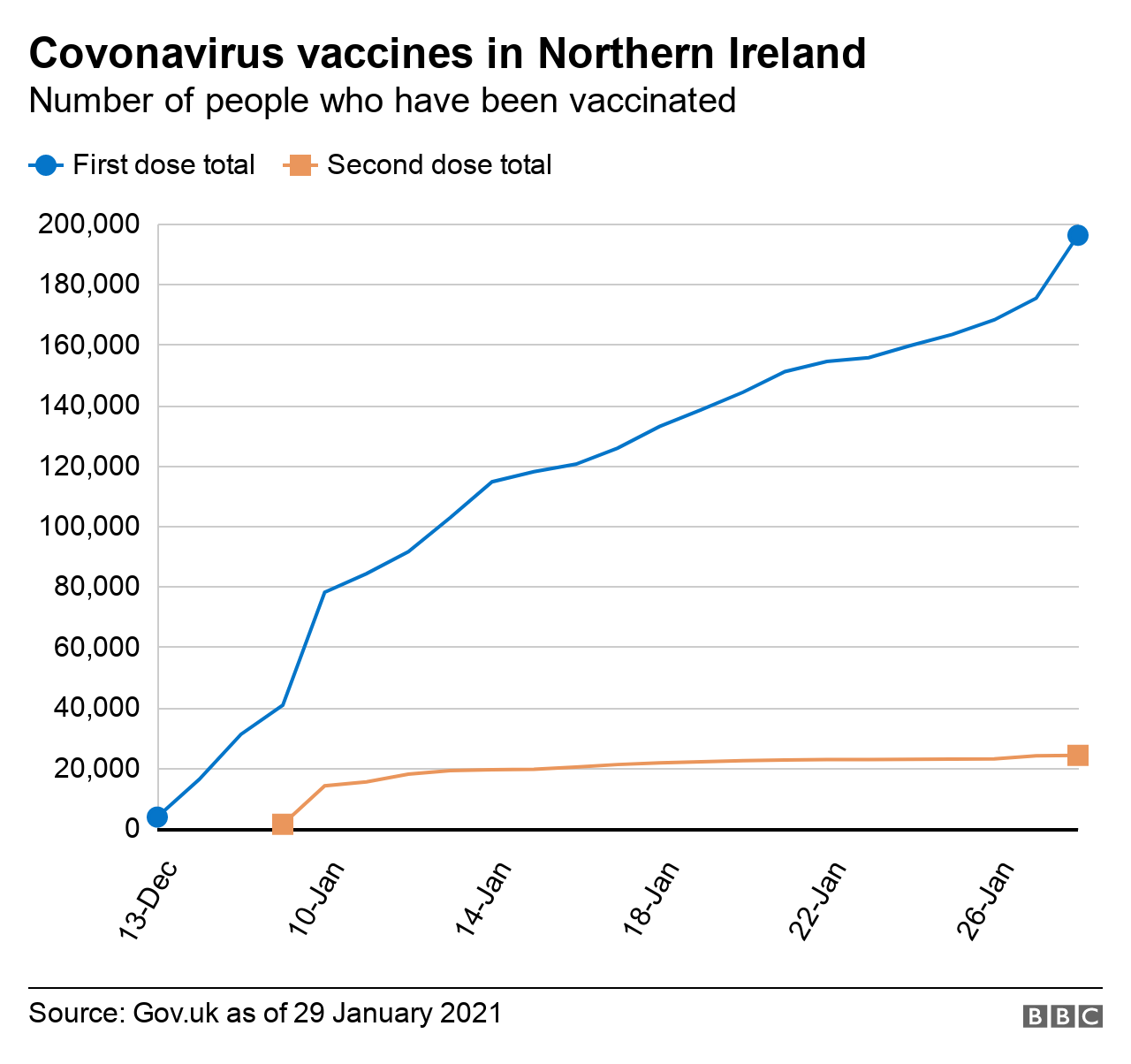

Northern Ireland is in a good place in terms of the number of people vaccinated.
Despite some controversy about certain aspects of the rollout, in raw numbers terms, Northern Ireland's vaccination story has been a very positive one.
As of 28 January, almost 200,000 people in Northern Ireland have been given a coronavirus vaccine jab - that's about 10.5% of the population.
For context:
England - 10.3% of population vaccinated
Scotland - 9.6%
Wales - 11.6%
Republic of Ireland - 2.9%
But consider that under-18s are not part of vaccination plans at present.
When you take this into account Northern Ireland's numbers look even more impressive - 13.6% of our adult population has been vaccinated.
That is a massive cause for hope.
The fact that anyone aged between 65 and 69 can now book their jab at their leisure, online or by phone, seems to have led to a huge increase in the number of vaccines being given.
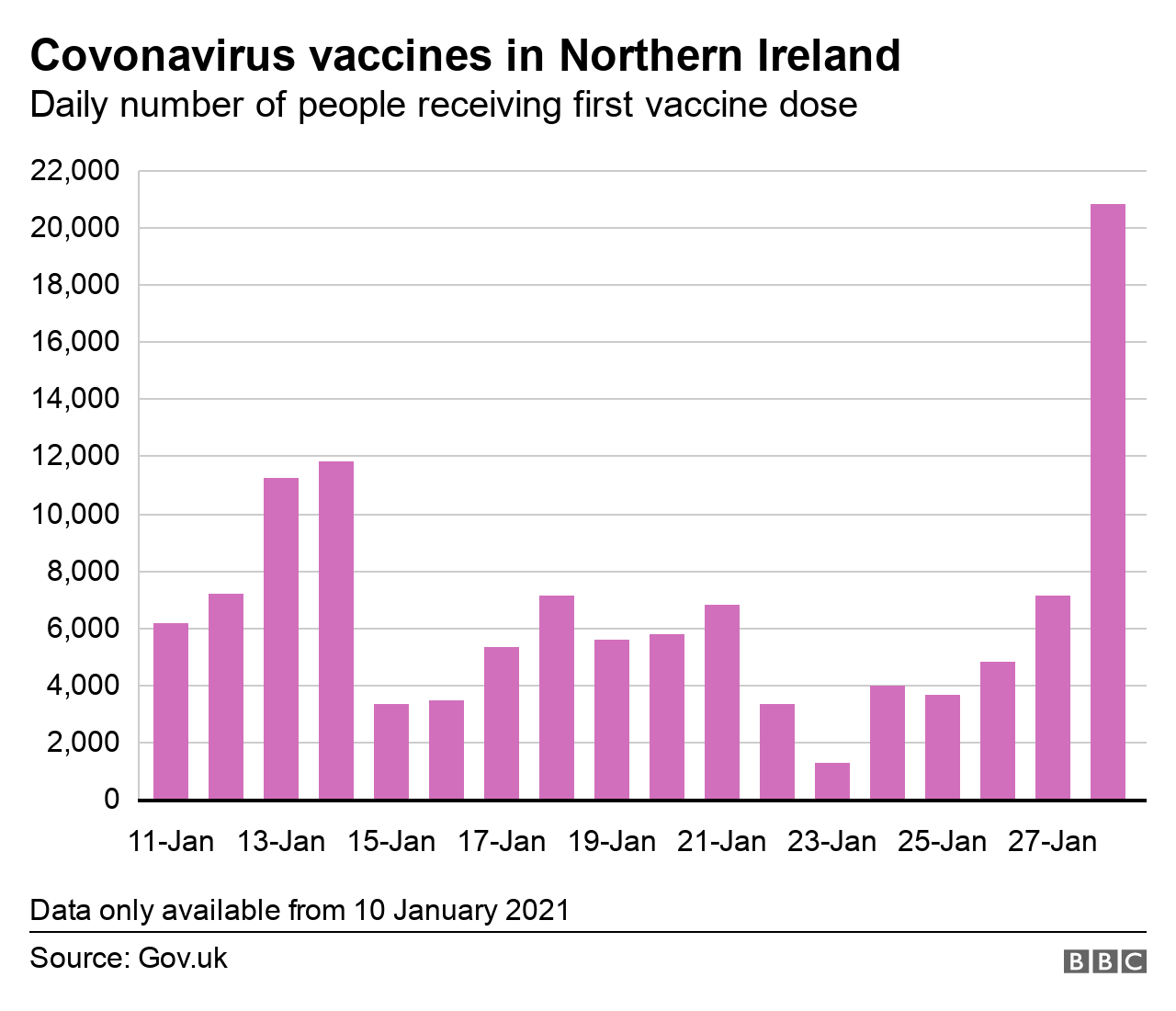

On Thursday 28 January, almost 21,000 people got their first dose.
This represents a huge upswing in the rate of rollout - for example, five days previous just under 1,300 were vaccinated.
This big increase makes sense. People aged between 65 and 79 are now getting vaccinated.
That's a group of more than 230,000 people. If our vaccination process can keep up the rate of 20,000 a day that age group could be completed in about two weeks.
After a very quick start, Northern Ireland's rate of vaccinations had dropped considerably and for about a week we were the slowest in the UK at getting it into people's arms.
This recent increase in the speed of delivery is a very welcome boost in the fight against the virus.
Something that is less clear is whether the Department of Health has reached its targets for its vaccination priority groups - care home residents; care home staff; Health and Social Care workers and people aged 80+.
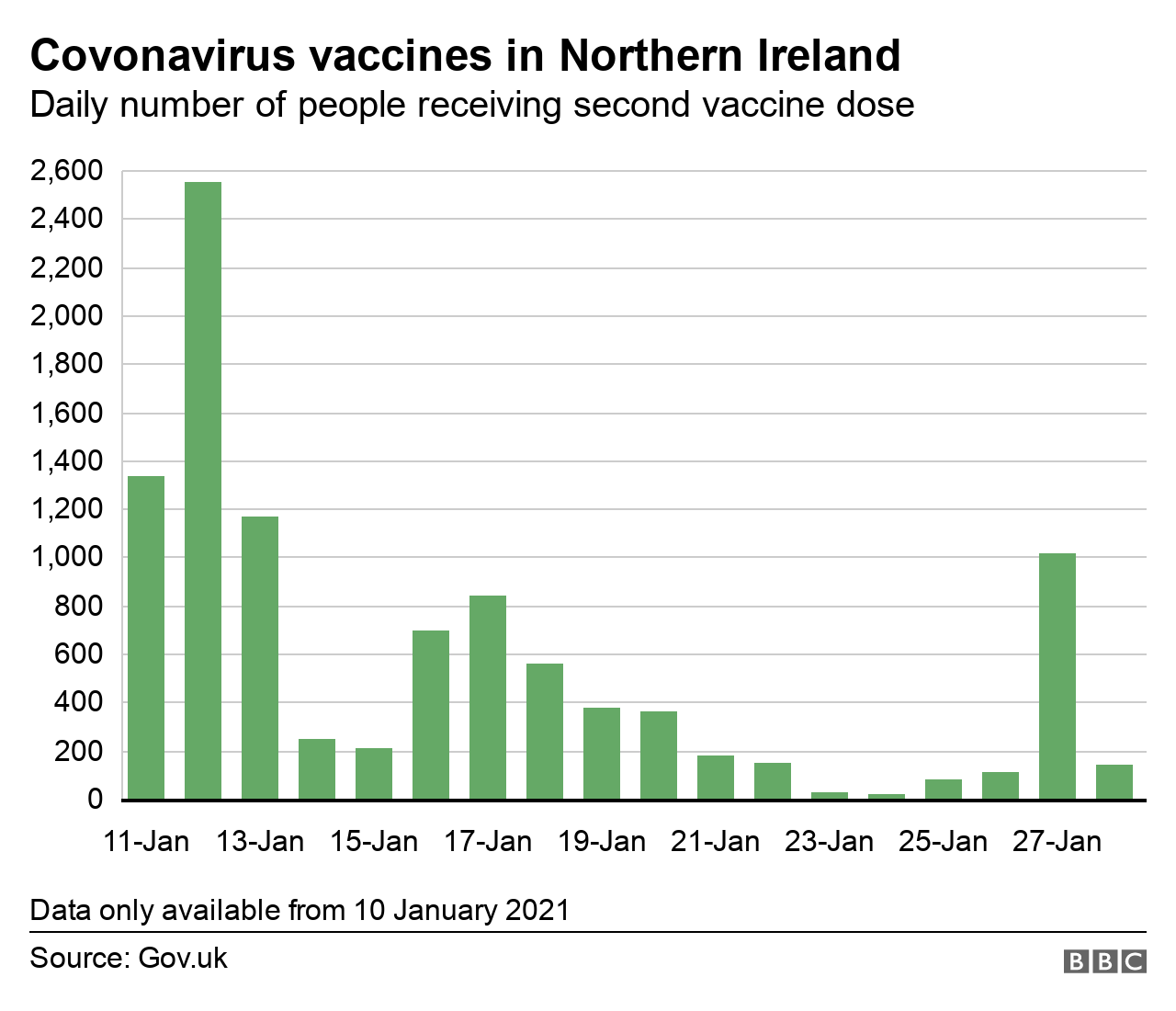

The Department of Health says that so far 83% of the 80+ group has received a first dose. However, it is unclear whether this is meeting the department's goal.
The BBC has asked the department for clarity about this.
The Department of Health also says that 100 % of care homes have received a first dose.
It is unclear whether this means that vaccinators have simply visited all of Northern Ireland's care homes, or whether it means that all staff and residents have been vaccinated.
The BBC has also asked the department for clarity about this.
Hardly surprising is the tiny number of second doses being administered.
This has fallen because of the policy to prioritise first doses.
The number of second doses being given out each day range between a few dozen and a few hundred.
Deaths
January has been an awful month for Covid-related deaths. The worst of the pandemic in fact.
The Northern Ireland Statistics and Research Agency (Nisra) recently published its highest tally of the pandemic for weekly deaths.
The figures cover the week up to 22 January and reflect the number of death certificates where Covid was mentioned.
Nisra recorded 182 deaths in that one week.
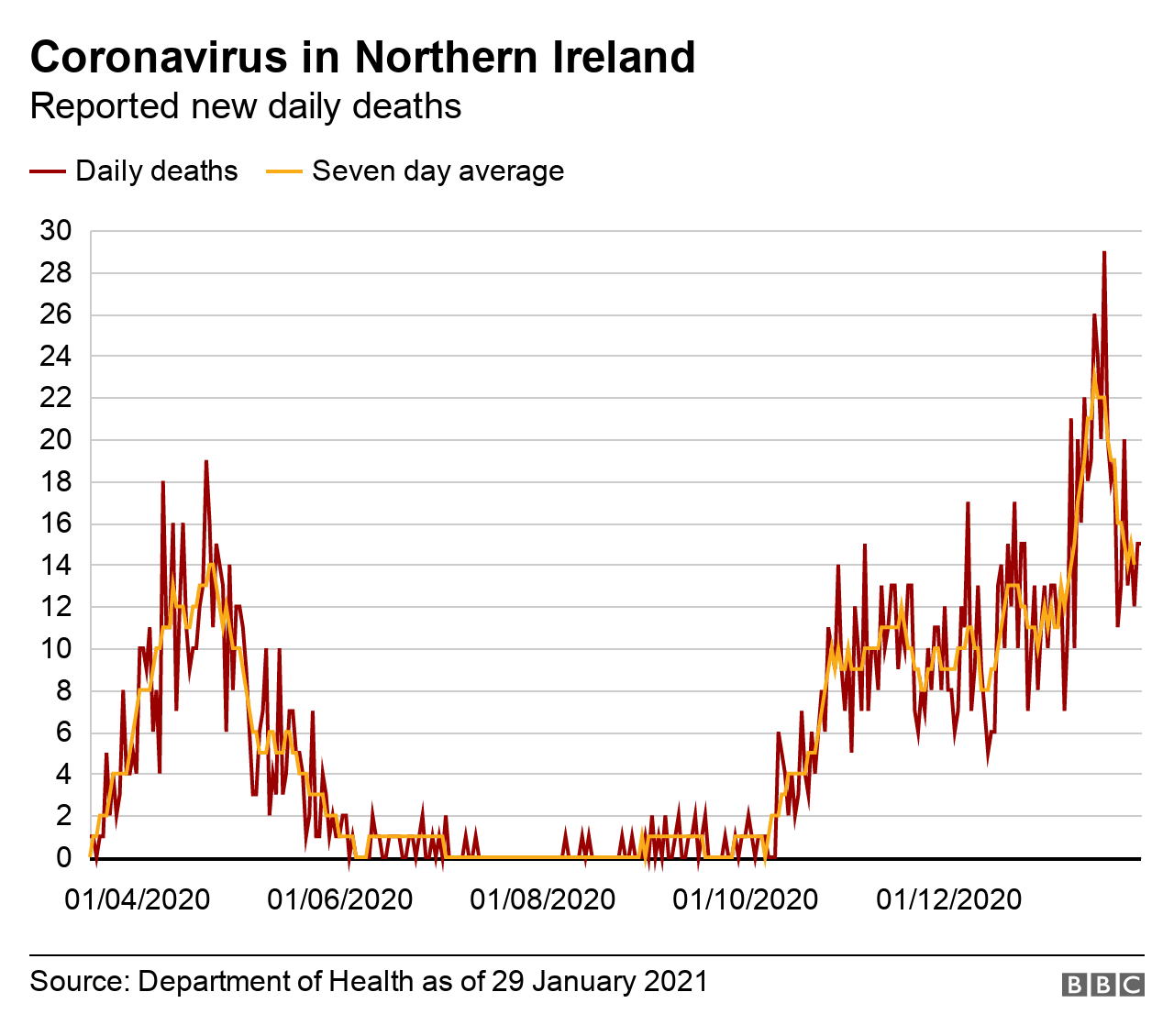

The figures on Northern Ireland's Covid dashboard indicates the frequency of Covid deaths has been falling, but slowly.
We are still seeing deaths at about the same numbers as the peak of the first wave of the pandemic.
It's a pattern that's mirrored in other parts of the UK and the Republic of Ireland.
While the numbers are still not good, at least they are falling. It should however be remembered that they could easily start to rise again.
Hospital admissions
Hundreds of people are still in hospital suffering from Covid, and our hospitals and healthcare workers remain under huge pressure.
There has been a fall but it comes from an exceptional high point.
Revised data from the Department of Health shows for a period of five days - 10 January 10 to 14 January - there were more than 1,000 patients reported each day in our hospitals with Covid.
That's more than one in three of all hospital beds available in Northern Ireland.
Currently, there are about 750 people in hospital in Northern Ireland with Covid.
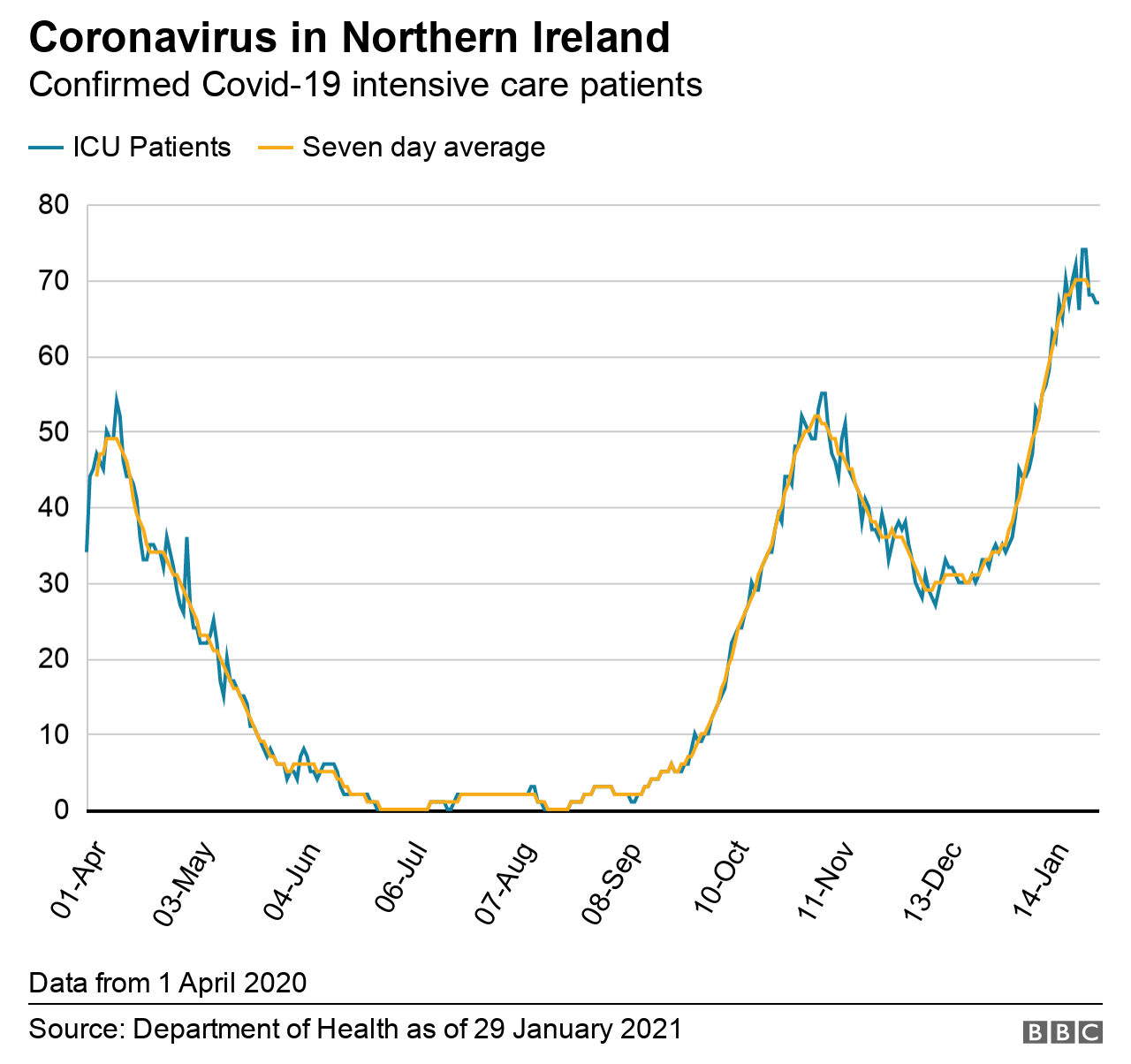

If it's tough in wards, figures indicate that it's even tougher in intensive care (ICU).
We've plateaued at about 70 patients in ICU for almost two weeks now. In theory this number should fall in line with the fall in hospital admissions, but we haven't really seen that yet.
We have more unoccupied ICU beds than at previous points in the pandemic, suggesting that we have capacity to deal with the increased number.
But those extra beds come with a price - the trimming of other medical services.
Infection rates
We're now a month into this current lockdown and the fall in the spread of the virus is a strong indication that it's been effective in getting the virus under control.
The first week of January saw huge increases in case numbers and spiralling infection rates.
Since around the second week of the month, both those measures have been falling consistently.
We still have many more cases than were reported at the height of the first wave last April, although that can be explained by the fact that testing is much more widespread now.
At one point in the pandemic, the virus was spreading in a seemingly uncontrollable fashion in parts of Northern Ireland. Thankfully, it is a very different picture now.


According to figures from the BBC's Data Unit, Northern Ireland's infection rates continue to fall and are among some of the lowest in the UK.
For the week up to 24 January, every council area in Northern Ireland saw a drop in its infection rate.
Armagh City, Banbridge and Craigavon Borough Council still has the highest infection rate in NI at 473 per 100,000 population.
Derry City and Strabane Borough Council - once the highest in all of the UK - now has the lowest in Northern Ireland. It's 142 cases per 100,000 population.
These lower infection rates, coupled with an expected boom in vaccinations, should - in time - mean fewer people being admitted to hospital, fewer people in ICU, and fewer people dying of the virus.
The statistics suggest we're starting to turn that corner, however slowly, and with a long journey still ahead of us.
Related topics
- Published29 July 2021
